I keep thinking about what that 80-year-old woman in Leksand said. I couldn't even walk 9.3 miles and certainly not while knitting. On the other hand it really also made me think about all the skills and techniques that have been lost or almost lost through the ages. Whether it is because of German Knitting teachers who taught that there way was the only way to knit or if it was just because of the evolution of the modernization of techniques for one reason or another. Even today, when someone actually tries to do research on shawl construction, it is almost impossible to find written text about the construction and history. On top of that, if the book was ever written, it is probably out of print. So this really got me thinking about things I have read, shawls that I was lucky enough to see in the Ohio Sate University Textile collection, techniques I figured out on my own due to the fear of running out of yarn, and also information that I gained during the most recent workshops that I attended. If you have other references on these construction types, please let me know. I would love to be able to find out more. |
|||||||||||||||||||||
This is probably the shawl design that we are all the most familiar with and understandably it is probably the easiest one to work out the math. You create either a large square or large rectangle. When the center is completed the outer most stitch is then picked up and worked around the edge of the main square as the anchor. The corners are either done using short rows or by bunching up extra stitches to form a corner. The bunched up stitches though have a tendency to create a pucker or a poof. |
|||||||||||||||||||||
Up until the workshop that I took with Galina Alexandrovna Khmeleva I didn't realize that this was the technique for Traditional Orenburg Lace Shawls. When I was working on one of my shawl last winter I basically figured out this structure, but I was knitting the brown body section with three needles. (2 needles were used for the borders and then a longer needle for the actual body) I wanted to knit the borders as I went because I had a huge fear of running out of the two skeins of yarn that I had. This technique evolved with the next bordered shawl that I made and I ended up just knitting the borders across. The right side (front side) is always one row ahead of the backside. You can tell that you are on the front side of your work because the tail from the cast on is on the left hand side. |
|||||||||||||||||||||
|
|||||||||||||||||||||
Galina Alexandrovna Khmeleva 2008. Orenburg Lace Shawl Workshop |
|||||||||||||||||||||
The traditional Shetland Shawl is worked in 4 pieces. The main body is started by the outside edge where you work short row edges to form half of the corners. The outside border is normally made up of two borders before the body is started. The body is worked from one edge to another to form either a square or rectangle. The other three sides are knit separately and then grafted together. |
|||||||||||||||||||||
This shawl is knit in two pieces. The center is knit as a diamond in garter stitch. The big difference is the outer length of each of the outer borders are cast on and worked to the center. Then the center edges are grafted together traditionally using the Herringbone Stitch or Mattress stitch. Miller, Sharon 2006. "Heirloom Knitting's Shetland Hap Shawls" |
|||||||||||||||||||||
This shawl is knit in one piece if knitted in the round. The center is knit as a diamond in garter stitch. Then the outer stitches on all sides are picked up and knit outwards. (Note: If you do not work this shawl in the round you would do the method described above under Traditional Shetland Shawl.) Miller, Sharon 2006. "Heirloom Knitting's Shetland Hap Shawls" |
|||||||||||||||||||||
For a lot of the earlier shawls they didn't have a border around the edge. The shawl was knit with one lace pattern in the middle and a garter stitch around all the sides. The garter stitch was often pulled out to form points with out a complicated border. Nancy Bush 2008. Knitting Estonian Lace Workshop |
|||||||||||||||||||||
I cannot find any information on actual construction. From the workshop I attended these shawls where knit in three pieces and the bind off edge of the border were grafted to the center. We will have to wait until the first Estonian Lace book is published in the states hopefully this fall to find out the secrete. Nancy Bush 2008. Knitting Estonian Lace Workshop |
|||||||||||||||||||||
It seems like with most modern adaptations complicated math and grafting has been replaced with picking up the outer stitch and working the border outwards to the bind off edge. Here the center square is made up of one knitted lace pattern framed with garter stitches. Then stitches are picked up along all four sides and knitted outwards to create a decorative border. Nancy Bush 2008. Knitting Estonian Lace Workshop
|
Sunday, February 10, 2008
kitty:my thoughts on square shawl construction
Subscribe to:
Post Comments (Atom)
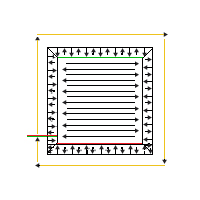 Modern Shawl
Modern Shawl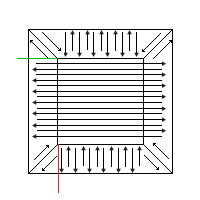 Orenburg Lace Shawl
Orenburg Lace Shawl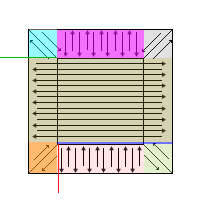
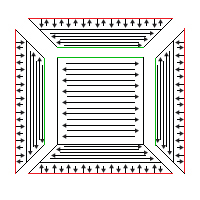 Traditional Shetland Shawl
Traditional Shetland Shawl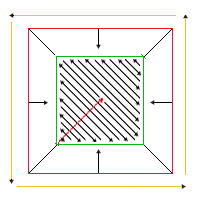 "Border Inwards" Traditional Hap Shawl
"Border Inwards" Traditional Hap Shawl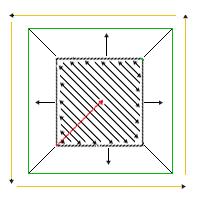 "Border Inwards" Modern Hap Shawl
"Border Inwards" Modern Hap Shawl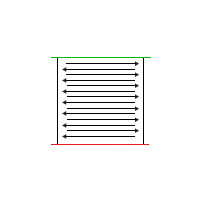 Traditional Estonian Knitted Shawls
Traditional Estonian Knitted Shawls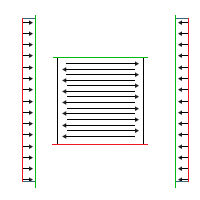 ????? Early Haapsalu, Estonian Knitted Shawl????
????? Early Haapsalu, Estonian Knitted Shawl????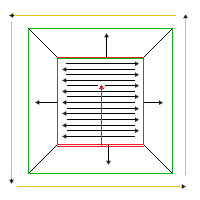 Modern Estonian Shawls
Modern Estonian Shawls





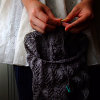
That's a great post! Very good illustrations and explanations, and so much information and so interesting.
ReplyDeleteWow... me brain hurts :) But in a good way. I've only knit square shawls in the round so far. I do have the Heirloom Shawl book and the Hap Shawl book, but have yet to knit something from them. I did get yarn while on Shetland last year, but I just have not had the courage yet to either knit a mile and a half of border first and then knit a shawl inwards or knit a garter stitch square bigger than a swatch to make a shawl out of it... one day I'll get there I think.
ReplyDeleteFor now I'm going to bookmark this post and come back to it to read it again.
Cheers Eva
What you can't walk 9 miles? What about 2 miles? We need to do that and yes I can knit while I walk.
ReplyDeleteWhat a fantastic summary! Thanks so much for putting it together--I kniw it was a lot of work.
ReplyDeleteI have two more constructions for you, but I can't talk about them for a while. Never before seen! Wow ! fleegle exclusives! Stay tuned!
A quick opinion on what you were saying at the beginning about how skills have been lost; I disagree. Yes, most of us can't knit for 15 miles but that's because we've spent our lives learning all sorts of other things, like blogging and doing math and reading and all sorts of other things. If we spent our entire lives learning to knit, we could certainly knit and walk at the same time, just as I'm sure most of us can read and walk at the same time after years spent in grade school reading and reading and reading. The difference between now and then is that we've specialized on different things, and I'm sure you'll agree (no matter how much we love knitting) that being able to do the odd calculation or paint or recall a poem makes all our lives a bit richer :)
ReplyDeleteOkay, that is way awesome! Especially the Orenburg Lace Shawl. I'm gonna have to knit something like that :)
ReplyDeletebuy Orenburg Shawls here
ReplyDeletewww.orenburg-shawl.com